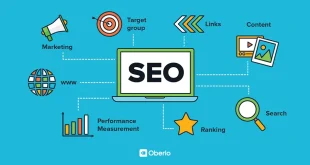E-mail Marketing In the digital landscape, where trends come and go, email marketing remains a steadfast strategy for businesses to connect with their audience. Leveraging the power of email, marketers can deliver targeted messages directly to their subscribers’ inboxes, fostering engagement and driving conversions E-mail Marketing
Importance of E-mail Marketing
Why E-mail Marketing Matters
Email marketing offers a direct line of communication with potential customers, allowing businesses to nurture leads and build lasting relationships. Email marketing guarantees that your message reaches your audience consistently, unlike social media algorithms that could limit reach.
Benefits of E-mail Marketing
Enhanced Brand Awareness: Consistent email correspondence helps subscribers remember your brand.
Personalized Communication: Tailoring content to recipients’ interests and behaviors enhances engagement and conversion rates.
Getting Started with E-mail Marketing
Building Your E-mail List
Any email marketing strategy that is successful starts with a strong email list. Provide rewards to entice people to sign up, such discounts or access to special material.. Ensure compliance with data protection regulations and obtain explicit consent from subscribers.
Crafting Engaging Content
Creating content that your audience finds interesting and relevant is essential to successful email marketing. Segment your email list based on demographics, preferences, and purchase history to send targeted messages that address subscribers’ specific needs and interests.
Designing Effective E-mail Campaigns
Subject Lines That Stand Out
The subject line is the first thing recipients see, so make it compelling and relevant to increase open rates. Experiment with different tactics, such as personalization or urgency, to capture subscribers’ attention and entice them to click.
Creating Compelling Content
Keep your email content concise, visually appealing, and focused on delivering value to the reader. Incorporate multimedia elements, such as images or videos, to enhance engagement. Include clear calls-to-action that prompt recipients to take the desired action.
Maximizing E-mail Deliverability
Understanding Spam Filters
Avoid common triggers that can land your emails in the spam folder, such as using excessive capitalization or misleading subject lines. Monitor your sender reputation and adhere to best practices to maintain high deliverability rates.
Best Practices for Deliverability
Authenticate your domain and use a reputable email service provider to ensure that your emails reach recipients’ inboxes. Regularly clean your email list to remove inactive or invalid addresses and minimize bounce rates.
Analyzing and Optimizing Email Performance
Metrics to Track
Keep an eye on important metrics like conversion, click-through, and open rates to determine how successful your email marketing are. Use A/B testing to experiment with different elements and refine your strategies based on data-driven insights.
Strategies for Improvement
Continuously optimize your email marketing efforts based on performance data and subscriber feedback. Test different approaches, iterate on successful tactics, and stay informed about industry trends to stay ahead of the competition.
Email Marketing
Email marketing stands as a cornerstone in the digital marketing landscape, allowing businesses to establish direct and personalized communication channels with their audience. Through targeted email campaigns, companies can foster engagement, drive conversions, and build lasting relationships with their customers.
Benefits of Email Marketing
Increased Reach and Engagement
Email marketing enables businesses to reach a vast audience directly in their inboxes. With email open rates typically higher than social media reach, companies can ensure their messages are seen and engaged with by their target demographic.
Cost-Effectiveness and High ROI
Compared to traditional marketing channels, email marketing offers exceptional value for money. With minimal overhead costs and the ability to automate campaigns, businesses can achieve impressive returns on their investment in email marketing efforts.
Targeted and Personalized Communication
One of the most significant advantages of email marketing is the ability to tailor messages to individual recipients. By segmenting email lists based on demographics, behaviors, and preferences, companies can deliver highly relevant content that resonates with their audience, driving engagement and conversion rates.
Getting Started
Building an Email List
The foundation of any successful email marketing campaign is a robust email list. Companies can grow their subscriber base by offering incentives such as discounts or exclusive content in exchange for email sign-ups. It’s essential to obtain explicit consent from subscribers and comply with data protection regulations to maintain trust and credibility.
Crafting Compelling Content
Once an email list is established, the focus shifts to creating engaging and valuable content. Whether it’s informative newsletters, promotional offers, or personalized product recommendations, companies must deliver content that captures the attention of subscribers and prompts them to take action.
Designing Effective Campaigns
Subject Lines That Stand Out
The subject line is the gateway to an email campaign’s success. Crafting compelling subject lines that pique curiosity, evoke emotion, or create a sense of urgency can significantly impact open rates and campaign performance.
Creating Engaging Content
In addition to captivating subject lines, the content of an email must deliver on the promise of the subject line. Whether it’s informative articles, visually appealing product showcases, or exclusive offers, the content should provide value to the recipient and drive them towards the desired action.
Maximizing Deliverability
Understanding Spam Filters
Deliverability of emails is essential to email marketing campaigns’ success. Understanding how spam filters work and avoiding common triggers such as spammy language or excessive use of images can help ensure that emails land in recipients’ inboxes rather than their spam folders.
Best Practices for Deliverability
Maintaining a positive sender reputation is essential for achieving high deliverability rates. Companies should regularly clean their email lists, authenticate their domain, and adhere to best practices outlined by email service providers to optimize deliverability and inbox placement.
Analyzing Performance
Key Metrics to Track
To gauge the effectiveness of email marketing campaigns, companies should track key metrics such as open rates, click-through rates, and conversion rates. Analyzing these metrics provides valuable insights into campaign performance and helps identify areas for improvement.
Strategies for Improvement
Armed with data-driven insights, companies can refine their email marketing strategies to achieve better results. Whether it’s experimenting with different subject lines, segmenting email lists more effectively, or optimizing send times, continuous improvement is key to maximizing the impact of email marketing efforts.
Power of Communication
In conclusion, the importance of email marketing cannot be overstated in today’s digital landscape. By leveraging the power of targeted communication, personalized content, and data-driven insights, companies can connect with their audience in meaningful ways, driving engagement, loyalty, and ultimately, business success.
Email marketing is still a potent tool that helps organizations engage with their audience, encourage interaction, and increase conversions in the modern digital era. Understanding the basics of email marketing is essential for those looking to harness its full potential.
Building Your E-mail List
Strategies for Growing Your Subscriber Base
The first step in successful email marketing is creating an email list. Implement strategies such as offering incentives for sign-ups, optimizing website forms, and leveraging social media to expand your subscriber base.
Crafting Compelling Content
Creating Content That Resonates
The key to successful email marketing lies in delivering content that resonates with your audience. Tailor your messages to address their pain points, interests, and preferences, and focus on providing value with every email sent.
Designing Effective Campaigns
Tips for Successful E-mail Campaigns
When designing email campaigns, consider factors such as subject lines, visuals, and call-to-action buttons. Experiment with different elements to optimize open rates, click-through rates, and ultimately, conversion rates.
Understanding Analytics
Utilizing Data to Optimize Campaigns
Track metrics such as open rates, click-through rates, and conversion rates to gain insights into campaign performance and identify areas for improvement.
Ensuring Deliverability
Best Practices for Inbox Placement
To ensure that your emails reach your subscribers’ inboxes, follow best practices for deliverability. Maintain a clean email list, use a reputable email service provider, and avoid spams tactics that could trigger spam filters.
Integrating with Other Marketing Channels
Maximizing Email Marketing Impact
Other marketing channels like social media and content marketing can be strengthened and supplemented by email marketing. Integrate your email marketing efforts with your overall marketing strategy for maximum impact and consistency.
Automation and Personalization
Streamlining Processes and Enhancing Engagement
Automation tools allow you to streamline email marketing processes and deliver personalized messages at scale.
Compliance and Legal Considerations
Navigating Regulations and Guidelines
When conducting email marketing campaigns, it’s essential to comply with regulations such as GDPR and CAN-SPAM. Familiarize yourself with legal requirements and best practices to protect your brand reputation and ensure compliance.
Understanding the Basics
Mastering the art of email marketing requires a combination of strategy, creativity, and attention to detail. By understanding the basics, crafting compelling content, and leveraging data-driven insights, businesses can unlock the full potential of email marketing to drive growth and engagement.
Designing effective email campaigns requires careful planning and attention to detail. Campaigns that connect with your audience and provide significant outcomes can be made by adhering to best practices and utilizing tried-and-true tactics.
Crafting Compelling Subject Lines
The subject line is the first thing recipients see when they receive your email, so it’s crucial to make it attention-grabbing and compelling. Keep it short and to the point, and use language that sparks curiosity or urgency to entice recipients to open your email.
Creating Engaging Content
Once you’ve captured your audience’s attention with a compelling subject line, it’s essential to deliver on the promise of your email. Craft content that is relevant, valuable, and engaging to keep recipients interested and encourage them to take action.
Personalizing the Message
Personalization is key to making your emails feel relevant and valuable to your audience. Use data such as past purchase history, browsing behavior, and demographics to tailor your message to each recipient’s interests and preferences.
Optimizing for Mobile Devices
With more people accessing emails on mobile devices than ever before, it’s essential to ensure that your campaigns are optimized for mobile viewing. Use responsive design techniques to ensure that your emails look great and are easy to read on any device.
Including Clear Calls-to-Action
Every email campaign should have a clear call-to-action that prompts recipients to take the desired action. Whether it’s making a purchase, signing up for a webinar, or downloading a resource, make sure your call-to-action is prominent and easy to understand.
Testing and Iterating
Finally, don’t forget to test your email campaigns before sending them out to your full list. Use A/B testing to experiment with different subject lines, content formats, and calls-to-action to see what resonates best with your audience. Then, use the insights gained from testing to iterate and improve future campaigns.
By following these best practices for designing effective email campaigns, you can maximize the impact of your marketing efforts and achieve your business goals.
Creating engaging content is essential to capturing and maintaining the attention of your email subscribers. By crafting content that is valuable, relevant, and compelling, you can drive engagement and encourage recipients to take action.
Understanding Your Audience
Take the time to research your subscribers’ interests, preferences, and pain points so that you can tailor your content to resonate with them. Use data such as past purchase history, demographic information, and website behavior to segment your audience and deliver targeted messages.
Providing Value
Once you understand your audience, focus on providing value with your content. Whether it’s informative articles, helpful tips, or exclusive offers, make sure that your emails offer something of value to your subscribers. This will not only keep them engaged but also help to build trust and loyalty over time.
Using Compelling Visuals
Incorporating compelling visuals into your emails can help to grab recipients’ attention and make your content more engaging. Use high-quality images, videos, and graphics to complement your written content and make your emails visually appealing. Just be sure to optimize your visuals for fast loading times and mobile viewing.
Writing Compelling Copy
The words you use in your emails play a crucial role in engaging your audience. Write clear, concise, and compelling copy that communicates your message effectively and prompts recipients to take action. Use persuasive language, storytelling techniques, and calls-to-action to encourage engagement and drive conversions.
Personalizing the Experience
The secret to producing interesting content that connects with your audience is personalization. Use dynamic content blocks, merge tags, and personalization tokens to customize your emails with each recipient’s name, location, and other relevant information. This will make your emails feel more personalized and relevant, increasing engagement and response rates.
Encouraging Interaction
Finally, don’t forget to encourage interaction with your content. Include interactive elements such as polls, quizzes, and surveys to encourage recipients to engage with your emails and provide feedback. This will not only increase engagement but also help you gather valuable insights into your audience’s preferences and interests.
By following these best practices for creating engaging content, you can capture the attention of your email subscribers and drive meaningful engagement with your brand.
Conclusion
Email marketing remains a cornerstone of digital marketing strategies, offering unparalleled reach and effectiveness in engaging with target audiences. By following best practices and staying attuned to subscribers’ preferences, businesses can leverage email marketing to drive growth and nurture customer relationships.
FAQs
In the era of social media, is email marketing still relevant?
Absolutely! Email marketing offers a direct and personalized way to connect with your audience, complementing the broader reach of social media platforms.
How can I grow my email list effectively?
Ensure compliance with data protection regulations and prioritize quality over quantity when building your email list.
What types of content perform best in email marketing campaigns?
Content that is relevant, engaging, and tailored to recipients’ interests tends to perform well. Experiment with different formats, such as newsletters, product updates, or educational content, to see what resonates with your audience.
How can I improve email deliverability rates?
Focus on maintaining a positive sender reputation by adhering to best practices, such as avoiding spams tactics and regularly cleaning your email list. Authenticate your domain and monitor your email performance metrics to identify and address any deliverability issues.
What role does personalization play in email marketing?
Personalization is crucial for driving engagement and conversion rates. Segment your email list based on demographic information, purchase history, and engagement level to deliver targeted messages that resonate with individual subscribers.
 Daily Blogger News Stay updated with the latest trends and insights. Your reliable source for daily updates and information.
Daily Blogger News Stay updated with the latest trends and insights. Your reliable source for daily updates and information.







